It looks like you're using an Ad Blocker.
Please white-list or disable AboveTopSecret.com in your ad-blocking tool.
Thank you.
Some features of ATS will be disabled while you continue to use an ad-blocker.
share:
Strange and anomalous, glass found throughout Egypt's western Sahara and also into Libya as well, has baffled scientists for quite some time. These
mysterious specimens have been an enigma just waiting to be unraveled. Possibly until now...
Mystery Of
The Sahara Desert Glass
On a chilly December day in good old America of yesteryear, way back in 1932. Good folk were preparing for their traditional Christmas events with turkey and stuffing. On the other side of the world though, a man by the name of Patrick Clayton was exploring the wind blown dunes of the Saad Plateau south of the Great Sand Sea and happened upon a very strange sight. Some yellow-green tinged glass specimens were spotted as they distinctly stood out to the surrounding desert geography.
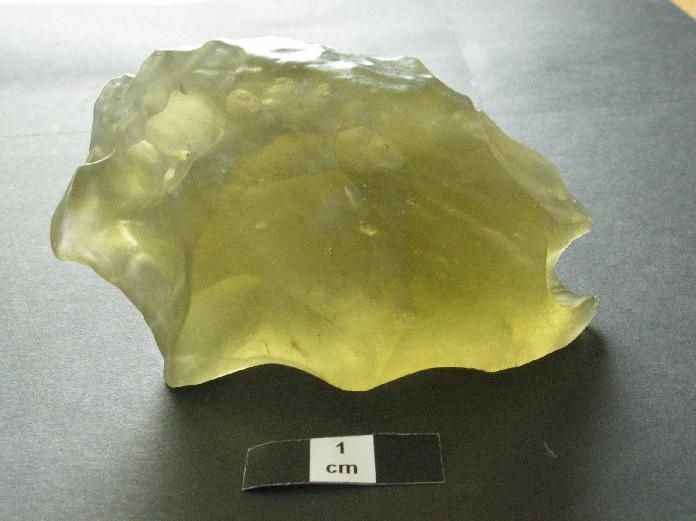
Clayton took samples as he was part of the Egyptian Geological Survey. He and an adventurous group of pioneers were exploring their way through the Sahara Desert in search of treasures and discovery. Clayton returned over the next couple years, collecting more samples until 1934 when he marked his last visit by leaving a whiskey bottle with a note inside.
As of today, these still can be found all over parts of the northern Sahara Desert.

The Ancient Egyptians found these glass objects as well, using them as decoration. They are uniquely beautiful in their appearance and definitely catch the eye. One can even be found in a pendant worn by King Tutankhamun.
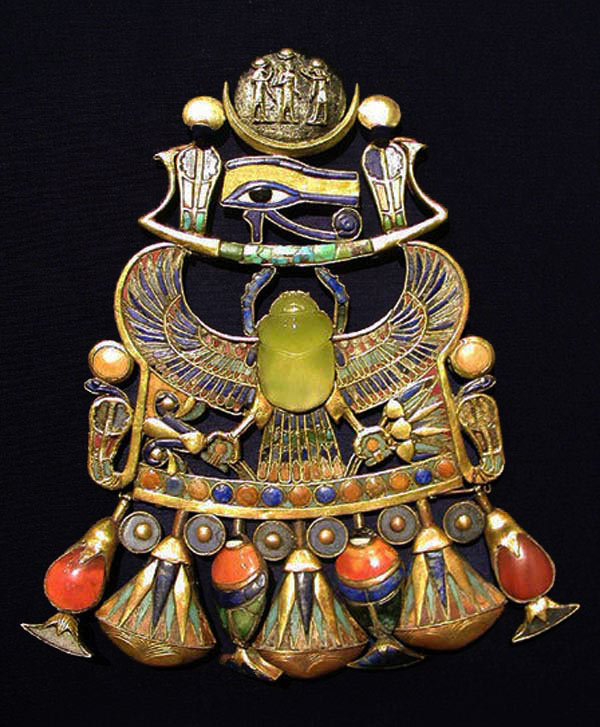
Something happened in our ancient past that created enough energy and heat to create these naturally occurring glass anomalies. Some theories have been ancient forest fires or possible lightning strikes.
Scientists today think they have a good notion of what created these anomalies although be it is still a theory. They now strongly feel the glass was a product of a meteor exploding into an aerial burst right before impact to the Earth. Causing the surface temperature to reach 1,800 degrees Celsius/3,272 degrees Fahrenheit. So violently hot, that the sand was turned to this yellow-green glass.
It is estimated to have occurred some 30 million years ago.
The image below is of the possible impact crater from the remaining debris left from the aerial explosion.

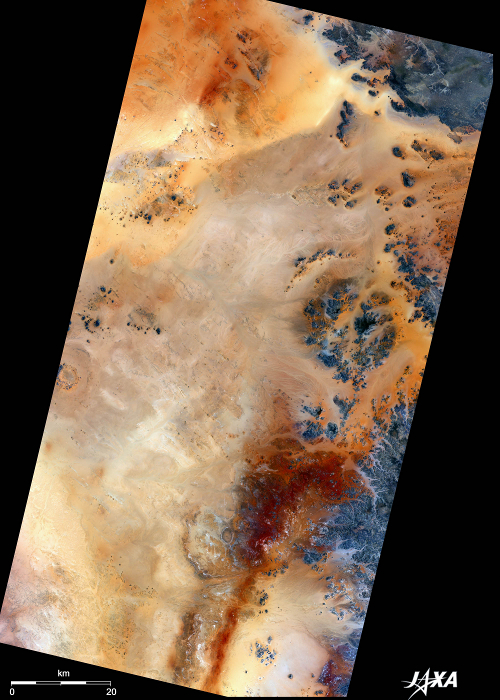
We have seen evidence of this phenomenon happening elsewhere, for example the Tunguska event.
Video Description:
We also were able to recently witness an extremely smaller scale version of the phenomenon with the Russian Meteorite from earlier this year.
Video Description:
Also in 1997 we recorded evidence of an asteroid named Matilda and found out it was made of lighter material, they have nicknamed theses asteroids "rubble piles"- a loose assembly of rock held together by gravity. This has now led astronomers to believe the rubble piles have a high likelihood of creating an aerial explosion impact over the traditional thought impact upon Earth. With the mounting evidence and a large number of asteroids now believed to be rubble piles, there has been a shift in opinion where now it is accepted that most are rubble piles and extremely weak.
Through work done with simulations, scientists believe the blast that created these glass objects were 10,000 times more powerful than the atomic test done at the Trinity site. See 40:14 in the final video below for reference to the simulation experiment.
This is a brilliant documentary about the modern investigation into this phenomenon.
Video Description:
I find this story amazing and urge you to investigate this on your own, there is some very cool information out there. I truly hope I get to travel to Egypt one day and be in awe of it's amazing places.
In conclusion, this makes me more curious about asteroids and the possible cause of an extinction of theoretical lost proto civilizations now (I know not everyone is in to that sort of thing and that is perfectly fine ) maybe not at this area in the world but an event such as this may have occurred numerous if not countless times over the Earth's history.
It really goes to show the extreme awesomeness of our Universe. The theory to me is very plausible, also the desert has moved and been covered over the centuries so who knows what other evidence is buried beneath the sands. The Sahara itself began roughly 7,000 years ago so quite a bit has happened over approximately 30 million years since this theorized event. Thank you for reading and please feel free to leave any comments or questions. I am in no way an expert on any of this, I just find it extremely interesting and I love trying to create unique and thought provoking threads. Cheers.

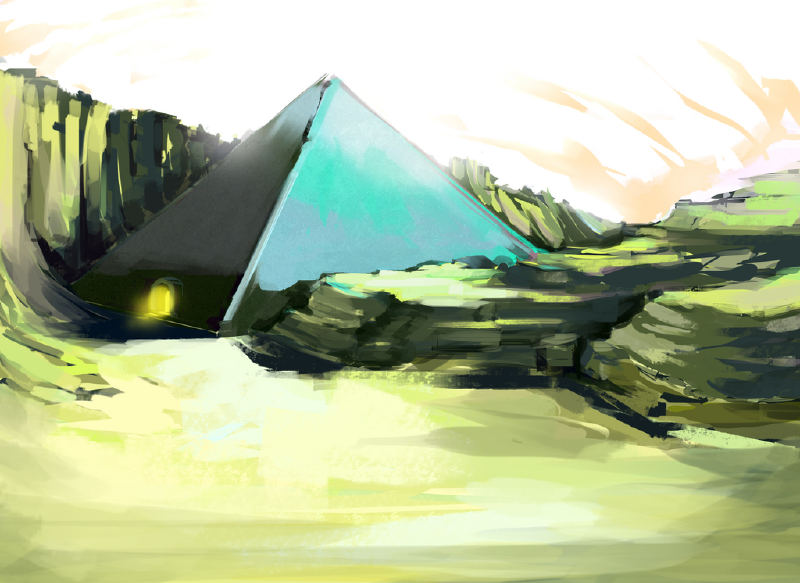
Thanks again for reading!
Mystery Of
The Sahara Desert Glass
On a chilly December day in good old America of yesteryear, way back in 1932. Good folk were preparing for their traditional Christmas events with turkey and stuffing. On the other side of the world though, a man by the name of Patrick Clayton was exploring the wind blown dunes of the Saad Plateau south of the Great Sand Sea and happened upon a very strange sight. Some yellow-green tinged glass specimens were spotted as they distinctly stood out to the surrounding desert geography.

Clayton took samples as he was part of the Egyptian Geological Survey. He and an adventurous group of pioneers were exploring their way through the Sahara Desert in search of treasures and discovery. Clayton returned over the next couple years, collecting more samples until 1934 when he marked his last visit by leaving a whiskey bottle with a note inside.
As of today, these still can be found all over parts of the northern Sahara Desert.

The Ancient Egyptians found these glass objects as well, using them as decoration. They are uniquely beautiful in their appearance and definitely catch the eye. One can even be found in a pendant worn by King Tutankhamun.

Something happened in our ancient past that created enough energy and heat to create these naturally occurring glass anomalies. Some theories have been ancient forest fires or possible lightning strikes.
Scientists today think they have a good notion of what created these anomalies although be it is still a theory. They now strongly feel the glass was a product of a meteor exploding into an aerial burst right before impact to the Earth. Causing the surface temperature to reach 1,800 degrees Celsius/3,272 degrees Fahrenheit. So violently hot, that the sand was turned to this yellow-green glass.
It is estimated to have occurred some 30 million years ago.
The image below is of the possible impact crater from the remaining debris left from the aerial explosion.


We have seen evidence of this phenomenon happening elsewhere, for example the Tunguska event.
Video Description:
link
At 7:17 AM on the morning of June 30, 1908, a mysterious explosion occurred in the skies over Siberia. It was caused by the impact and breakup of a large meteorite, at an altitude roughly six kilometers in the atmosphere. Realistic pictures of the event are unavailable. However, Russian scientists collected eyewitness accounts of the event. I believe that we now know enough about large impacts to "decode" the subjective descriptions of the witnesses and create realistic views of this historic asteroid impact as seen from different distances.
We also were able to recently witness an extremely smaller scale version of the phenomenon with the Russian Meteorite from earlier this year.
Video Description:
link
February 15, 2013. A meteor crashing in Russia's Ural mountains has injured at least 1200 people, as the shockwave blew out windows and rocked buildings.
Also in 1997 we recorded evidence of an asteroid named Matilda and found out it was made of lighter material, they have nicknamed theses asteroids "rubble piles"- a loose assembly of rock held together by gravity. This has now led astronomers to believe the rubble piles have a high likelihood of creating an aerial explosion impact over the traditional thought impact upon Earth. With the mounting evidence and a large number of asteroids now believed to be rubble piles, there has been a shift in opinion where now it is accepted that most are rubble piles and extremely weak.
Through work done with simulations, scientists believe the blast that created these glass objects were 10,000 times more powerful than the atomic test done at the Trinity site. See 40:14 in the final video below for reference to the simulation experiment.
This is a brilliant documentary about the modern investigation into this phenomenon.
Video Description:
Link
Horizon follows a team of scientists set out to solve the mystery of chunks of ancient glass scattered in a remote part of the Sahara Desert. Their quest takes them on a perilous journey into the Great Sand Sea, the wastes of Siberia and the test site of the world's first atomic bomb in New Mexico. What their search uncovers is a devastating new natural phenomenon.
I find this story amazing and urge you to investigate this on your own, there is some very cool information out there. I truly hope I get to travel to Egypt one day and be in awe of it's amazing places.
In conclusion, this makes me more curious about asteroids and the possible cause of an extinction of theoretical lost proto civilizations now (I know not everyone is in to that sort of thing and that is perfectly fine ) maybe not at this area in the world but an event such as this may have occurred numerous if not countless times over the Earth's history.
It really goes to show the extreme awesomeness of our Universe. The theory to me is very plausible, also the desert has moved and been covered over the centuries so who knows what other evidence is buried beneath the sands. The Sahara itself began roughly 7,000 years ago so quite a bit has happened over approximately 30 million years since this theorized event. Thank you for reading and please feel free to leave any comments or questions. I am in no way an expert on any of this, I just find it extremely interesting and I love trying to create unique and thought provoking threads. Cheers.


Thanks again for reading!
edit on 7/21/2013 by mcx1942 because: fix
This topic has always fascinated me, from all the theories, even the crazy ones like ancient nukes.
S&F as Ill have to watch that video.
Air burst of an meteorite has always struck me as the probable cause of such glass, as they are among the few things capable of producing the forces involved in the glasses creation.
S&F as Ill have to watch that video.
Air burst of an meteorite has always struck me as the probable cause of such glass, as they are among the few things capable of producing the forces involved in the glasses creation.
reply to post by benrl
Thank you.
The part in the video about the computer simulation is a little after 40:14, it is very impressive to watch. I highly recommend at least skipping to that part if pressed for time.
It would be such an amazing event to witness
Thank you.
The part in the video about the computer simulation is a little after 40:14, it is very impressive to watch. I highly recommend at least skipping to that part if pressed for time.
It would be such an amazing event to witness
edit on 7/21/2013 by mcx1942 because: (no reason given)
reply to post by PhoenixOD
i actually have some fulgurite (created when lightning hits sand) and it looks nothing like that.
the two things i know of that can make sand like that are meteors and nuclear explosions. this was probably a meteor.
I thought they were made by lightening hitting the sand
i actually have some fulgurite (created when lightning hits sand) and it looks nothing like that.
the two things i know of that can make sand like that are meteors and nuclear explosions. this was probably a meteor.
reply to post by mcx1942
Interesting topic. There may be a connection to this:
A new Theory of Ancient vitrification
(pdf from 2010, 9 pages)
I have no idea how credible this theory is and know next to nothing about this topic but it may be worth checking out.
Interesting topic. There may be a connection to this:
Glass Castles & Fire from the Sky
A new Theory of Ancient vitrification
(pdf from 2010, 9 pages)
link
Vitrified forts or castles exist across northern Europe, particularly in the countries of Scotland, France and Germany... ...nearly 200 vitrified forts found across Europe...
I have no idea how credible this theory is and know next to nothing about this topic but it may be worth checking out.
edit on 21-7-2013 by MindBodySpiritComplex because: (no reason given)
I skimmed through your well put together post and must come to my conclusion that space balls hit there and glassed it up for the quarry men...star
and flag my good man
The glass is obviously caused from ancient nuclear explosions. It's clear that the absence of an impact crater proves that the meteor theory is
completely baseless, that and the fact that a large part of Russia wasn't totally destroyed. It's just science.
How does sand change after an atomic explosion, does it come out like glass similar to the ones in the opening post or does it look and feel
different?
reply to post by SpaceSaviour
Here is a cool link to explain how we make glass: www.wikihow.com...
In nature the sand just needs high temperatures, enough to make it melt. That is why these glass objects are so different. The heat to make them is estimated to be around 1,800 degrees Celsius/3,272 Fahrenheit. That is hot!!
Because in the simulation, an object roughly about 21 kilometers/13 miles in size produced temperatures around the surface of the sun. That shows at 1,800 C the meteorite that exploded in Egypt was much smaller than 21 kilometers.
reply to post by MindBodySpiritComplex
Thank you for that pdf link.
I'm a fan of Dr. Schoch and his work.
Here is a cool link to explain how we make glass: www.wikihow.com...
In nature the sand just needs high temperatures, enough to make it melt. That is why these glass objects are so different. The heat to make them is estimated to be around 1,800 degrees Celsius/3,272 Fahrenheit. That is hot!!
Because in the simulation, an object roughly about 21 kilometers/13 miles in size produced temperatures around the surface of the sun. That shows at 1,800 C the meteorite that exploded in Egypt was much smaller than 21 kilometers.
reply to post by MindBodySpiritComplex
Originally posted by MindBodySpiritComplex
reply to post by mcx1942
Interesting topic. There may be a connection to this:
link
Vitrified forts or castles exist across northern Europe, particularly in the countries of Scotland, France and Germany... ...nearly 200 vitrified forts found across Europe...
Thank you for that pdf link.
I'm a fan of Dr. Schoch and his work.
edit on 7/21/2013 by mcx1942 because: add reply
edit on 7/21/2013 by mcx1942 because: 500th post! Sweet!
I guess I just always thought it was a meteor strike.
I'm not a believer in ancient nuclear wars.
I'm not a believer in ancient nuclear wars.
These look like Tektites or some other sort of high heat impact glass. Would be interesting if there was a meteorite crash some millions or thousands
of years ago in The Sahara. The inner conspiracy theorist in me would also find it interesting if there was some sort of nuclear explosion as well.
Also just because it keeps bugging me, Note: It's just "The Sahara" not "The Sahara Desert". Sahara is Arabic for desert (great desert more specifically)... so You would be saying "The desert desert". Just wanted to point out that tautology there.
Also just because it keeps bugging me, Note: It's just "The Sahara" not "The Sahara Desert". Sahara is Arabic for desert (great desert more specifically)... so You would be saying "The desert desert". Just wanted to point out that tautology there.
This is always an interesting subject
For the nuclear explosion believers a question - if it was an explosion - what was the target? Take a look at Hiroshima and Nagasaki. So why no ruins, why no associated culture or civilization?
Natural - or the aliens or 'advanced humans' were really bad shots or wearing hunting with nukes, lol
For the nuclear explosion believers a question - if it was an explosion - what was the target? Take a look at Hiroshima and Nagasaki. So why no ruins, why no associated culture or civilization?
Natural - or the aliens or 'advanced humans' were really bad shots or wearing hunting with nukes, lol
reply to post by mcx1942
I think there's a lot about our history we don't know or understand. Came across a few sites were objects, some that even appear to be technological, have been found in coal deposits purportedly to be anywhere from 100,000 years old to over 30million years old. Maybe we are in some greater entities sand box and from time to time they want to start over and scramble everything up.
I think there's a lot about our history we don't know or understand. Came across a few sites were objects, some that even appear to be technological, have been found in coal deposits purportedly to be anywhere from 100,000 years old to over 30million years old. Maybe we are in some greater entities sand box and from time to time they want to start over and scramble everything up.
reply to post by mcx1942
A very entertaining thread, thank you. I got VERY into meteors a few years ago, and wrote (a long and rambling) thread about it, it is an absolutely fascinating body of research. I think though that recent satellite imaging of the Sahara and surrounding areas has pretty much found that there was a great deal of occupation there at one point, but only at the level that we would expect...but ya never should say never
This is one of my favourite impact sites, for numerous meteorological and conspiratorial reasons...
en.wikipedia.org...
A very entertaining thread, thank you. I got VERY into meteors a few years ago, and wrote (a long and rambling) thread about it, it is an absolutely fascinating body of research. I think though that recent satellite imaging of the Sahara and surrounding areas has pretty much found that there was a great deal of occupation there at one point, but only at the level that we would expect...but ya never should say never
This is one of my favourite impact sites, for numerous meteorological and conspiratorial reasons...
The vast desert wasteland of southern Saudi Arabia known as the Empty Quarter, or Rub' al Khali in Arabic, is one of the most desolate places on Earth. In 1932, St. John Philby was hunting for a city named Ubar, that the Qur'an describes being destroyed by God for defying the Prophet Hud. Philby transliterated the name of the city as Wabar.
Philby had heard of Bedouin legends of an area called Al Hadida ('place of iron' in Arabic) with ruins of ancient habitations, and also an area where a piece of iron the size of a camel had been found, and so organized an expedition to visit the site. After a month's journey through wastes so harsh that even some of the camels died, on 2 February 1932 Philby arrived at a patch of ground about a half a square kilometer in size, littered with chunks of white sandstone, black glass, and chunks of iron meteorite. Philby identified two large circular depressions partially filled with sand, and three other features that he identified as possible 'submerged craters'. He also mapped the area where the large iron block was reputed to have been found. Philby thought the area a volcano, and it was only after bringing back samples to the UK that the site was identified as that of a meteorite impact by Dr Leonard James Spencer of the British Museum.[2][3][4]
A volcano in the midst of the Rub' al Khali! And below me, as I stood on that hill-top transfixed, lay the twin craters, whose black walls stood up gauntly above the encroaching sand like the battlements and bastions of some great castle. These craters were respectively about 100 and 50 yards in diameter, sunken in the middle but half choked with sand, while inside and outside their walls lay what I took to be lava in great circles where it seemed to have flowed out from the fiery furnace. Further examination revealed the fact that there were three similar craters close by, though these were surmounted by hills of sand and recognizable only by reason of the fringe of blackened slag round their edges.[5]
Amongst the samples of iron, cindery material and silica glass that Philby brought back from the site was a 25 lb chunk of iron. Analysis showed it to be about 90% iron and 5% nickel, with the rest consisting of various elements, including copper, cobalt, and 6 ppm of iridium, an unusually high concentration. This siderophile element implied that the "Wabar" site was a meteorite impact area.
en.wikipedia.org...
Thank you all for the comments.
I look forward to the future discoveries made about aerial burst meteorites around the world.
I look forward to the future discoveries made about aerial burst meteorites around the world.
Originally posted by PhoenixOD
I thought they were made by lightening hitting the sand.
You know that sounds like the best theory.
2nd
reply to post by mcx1942
I enjoyed that read, thank you and very worth of a Star and Flag, A truly plausible explanation, it would be interesting to date these glass nodules more accurately and try to compare the date's with other glass deposits around the world such as in Iraq and the Gobi Desert.
They have long been a mainstay of the ancient war theory but this explanation is excellent, still I would like to see a comparison of age's.
I enjoyed that read, thank you and very worth of a Star and Flag, A truly plausible explanation, it would be interesting to date these glass nodules more accurately and try to compare the date's with other glass deposits around the world such as in Iraq and the Gobi Desert.
They have long been a mainstay of the ancient war theory but this explanation is excellent, still I would like to see a comparison of age's.
Originally posted by Bob Sholtz
reply to post by PhoenixOD
I thought they were made by lightening hitting the sand
i actually have some fulgurite (created when lightning hits sand) and it looks nothing like that.
the two things i know of that can make sand like that are meteors and nuclear explosions. this was probably a meteor.
The fulgarites are from an arc mode discharge, the glass is likely from a dark or glow mode plasma that will have microwave frequency pulsations. The glass can be found on mainly hill tops or mountain peaks, along with other melted rock such as silicon dioxide. The silicon dioxide is amorphous, has almost no crystal structure remaining, indicating it has been heated to a much higher temperature than the underlying rock in its magma state would have been.
You can make glass from sand in a microwave oven, its rather hit-and-miss on the results as microwave ovens have regions of higher and lower temperature due to the wave mixing (constructive and destructive interference), but it can be done.
The plasma from a large CME would also be high frequency pulsed, by ion acoustic waves, so this should considered as a third method of the desert glass production. Also, all the deserts and sand 'seas' around the world contain sand with such consistent grain sizes that it is tough to image the sand grains being from erosion by wind over millions of years, when surface dissociation of sandstone by plasma streams flowing over the sandstone will produce such a grain consistency.
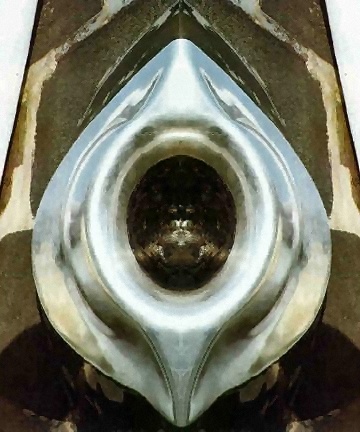
IT came from outer space!!!..the most famous glass like object that is literally the corner stone of one the five pillars of Islam.
A significant clue to its nature is provided by an account of the Stone's recovery in 951 AD after it had been stolen 21 years earlier; according to a chronicler, the Stone was identified by its ability to float in water. If this account is accurate, it would rule out the Black Stone being an agate, basalt lava or stony meteorite, though it would be compatible with it being glass or pumice. en.wikipedia.org...
en.wikipedia.org...

Not sure if the meteorite called the Black stone became glass like after impact or it became glass like after being rubbed by millions for centuries,but it's impact on the world was much greater than it's original crashing on this planet.
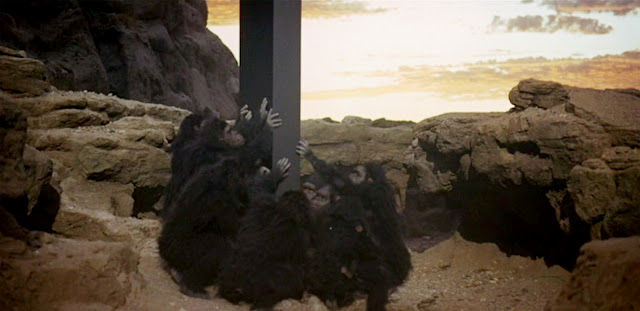
Kinda remind me of this
And yes I had to go there.
edit on 21-7-2013 by Spider879 because: I am an idiot??
new topics
-
The Phenomenon documentary by James Fox
Aliens and UFOs: 2 hours ago -
New UK Petition - Close the borders! Suspend ALL immigration for 5 years!
Regional Politics: 3 hours ago -
The Looking Glass - Episode 3: The Path of Least Resistance
Short Stories: 5 hours ago -
Credit card debt
Relationships: 7 hours ago -
President-elect Trump asks the Supreme Court to Let Tik-Tok Continue Operating in the U.S..
Mainstream News: 8 hours ago -
Treasury Secretary Janet Yellen Says The USA Will Be in Debt Default in Jan 2025 - Unless...
Mainstream News: 11 hours ago
top topics
-
The hunter has become the hunted
Politicians & People: 16 hours ago, 19 flags -
Trump's idea to make Canada the 51st US state: 'Potential is massive'
Mainstream News: 16 hours ago, 14 flags -
Danish Prime Minister said to keep 3 days worth of canned goods on hand
World War Three: 13 hours ago, 5 flags -
Treasury Secretary Janet Yellen Says The USA Will Be in Debt Default in Jan 2025 - Unless...
Mainstream News: 11 hours ago, 5 flags -
Trash To Treasure: Dumpster Diving With Mike The Scavenger
General Chit Chat: 12 hours ago, 4 flags -
Credit card debt
Relationships: 7 hours ago, 4 flags -
The Phenomenon documentary by James Fox
Aliens and UFOs: 2 hours ago, 2 flags -
The Looking Glass - Episode 3: The Path of Least Resistance
Short Stories: 5 hours ago, 1 flags -
New UK Petition - Close the borders! Suspend ALL immigration for 5 years!
Regional Politics: 3 hours ago, 1 flags -
President-elect Trump asks the Supreme Court to Let Tik-Tok Continue Operating in the U.S..
Mainstream News: 8 hours ago, 1 flags
active topics
-
Plane Crash Today --Azerbaijanian E190 passenger jet
Mainstream News • 50 • : Lazy88 -
The Acronym Game .. Pt.4
General Chit Chat • 1031 • : Encia22 -
Liberal Madness and the Constitution of the United States
US Political Madness • 17 • : Flyingclaydisk -
Treasury Secretary Janet Yellen Says The USA Will Be in Debt Default in Jan 2025 - Unless...
Mainstream News • 22 • : Skinnerbot -
No Wonder We Are In Such INSANE Debt- Americans MUST Put a Stop to This
US Political Madness • 69 • : YourFaceAgain -
Danish Prime Minister said to keep 3 days worth of canned goods on hand
World War Three • 6 • : YourFaceAgain -
Kurakhove officially falls. Russia takes control of major logistics hub city in the southeast.
World War Three • 9 • : YourFaceAgain -
Trump's idea to make Canada the 51st US state: 'Potential is massive'
Mainstream News • 48 • : Flyingclaydisk -
New UK Petition - Close the borders! Suspend ALL immigration for 5 years!
Regional Politics • 4 • : angelchemuel -
The Phenomenon documentary by James Fox
Aliens and UFOs • 1 • : 38181
